The search for perfection combined with the seek to the best performance, the beginnings of aerodynamics in road use, the obsessive attention in the development of engines, but above all the passion of people like Dallara, Bizzarrini, Gandini, Bertone, Chiti, Zagato, Pininfarina , Scaglietti … were the basic ingredients for the construction of cars today considered real legends.
Cars essential, made with pure enthusiasm and few materials: iron, wood, leather, aluminum and magnesium. A note European magazine in the late ’60s called the Italian cars as the most provocative around the world … after Sophia Loren.
Today, with undeniable enthusiasm, the new commitment of Marvic is to restore security for the owners of these stunning cars. Combining the passion and extensive experience in the use of magnesium alloys, Marvic is the only company able to offer the appropriate wheels, ensuring the exclusivity and the prestige that these cars deserve.
The magnesium wheels for classic cars proposed by Marvic in the new product line named HRC Wheels (Historic Racing Car Wheels) are perfect replicas that can ensure reliability perfectly mixed with authenticity of aesthetics and materials: the wheels are produced on the basis of the original drawings of the time, with the same manufacturing process that was originally used, but with current materials and quality standards, worthy of the aviation industry.
 Giotto Bizzarrini has helped to build the most beautiful cars of the ’50s and ’60s: the Testa Rossa of ’57, the 250 GT SWB and 250 GTO, are just some of the real icons of the international automotive that Bizzarrini has developed in collaboration with Chiti.
Giotto Bizzarrini has helped to build the most beautiful cars of the ’50s and ’60s: the Testa Rossa of ’57, the 250 GT SWB and 250 GTO, are just some of the real icons of the international automotive that Bizzarrini has developed in collaboration with Chiti.
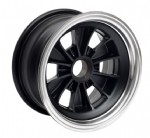 The history of Carroll Shelby and of his company is perhaps one of the most compelling and amazing in the world of four wheels. Grown up in a farm raising chickens - hence his famous and inevitable outfit – already turned thirty-six he participated in the 24 Hours of Le Mans and he won with a margin of one lap.
The history of Carroll Shelby and of his company is perhaps one of the most compelling and amazing in the world of four wheels. Grown up in a farm raising chickens - hence his famous and inevitable outfit – already turned thirty-six he participated in the 24 Hours of Le Mans and he won with a margin of one lap.
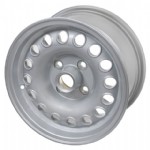 From the lucky “wedding” between the unique style of Giorgetto Giugiaro and Bertone in ’65 was born the Giulia GTA (Gran Turismo Alleggerita ). Designed to counteract the cars that excelled in the European Touring Car Championship was entrusted to the expert care of Engineer Chiti.
From the lucky “wedding” between the unique style of Giorgetto Giugiaro and Bertone in ’65 was born the Giulia GTA (Gran Turismo Alleggerita ). Designed to counteract the cars that excelled in the European Touring Car Championship was entrusted to the expert care of Engineer Chiti.
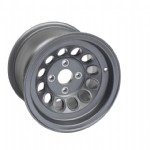 Derived from the 1750 GTV and intended to the European Championship Group 2, which is the championship for 2000 cm ³, the Alfa Romeo GTAm was born in 1969.
Derived from the 1750 GTV and intended to the European Championship Group 2, which is the championship for 2000 cm ³, the Alfa Romeo GTAm was born in 1969.
 Geneva's 1966 motor show: the birth of a legend!
It was 1965 and in Turin at the motor show, Lamborghini displayed a frame model with a steel structure and metal boxed with many holes in order to cut weight, created for a transverse mid-engine.
Geneva's 1966 motor show: the birth of a legend!
It was 1965 and in Turin at the motor show, Lamborghini displayed a frame model with a steel structure and metal boxed with many holes in order to cut weight, created for a transverse mid-engine.
 This extraordinary racing car was born in ’65 from the pencil of the legendary Eric Broadley. He was the founder of the prestigious British brand Lola Cars who, as Chapman and other English fans at that time, decided to design and build his own racecars based on Austin 7.
This extraordinary racing car was born in ’65 from the pencil of the legendary Eric Broadley. He was the founder of the prestigious British brand Lola Cars who, as Chapman and other English fans at that time, decided to design and build his own racecars based on Austin 7.
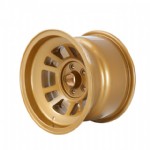 The history of the De Tomaso is a bittersweet story, exciting and melancholy, sadly no happy ending for it, but thanks to the passion of Alejandro De Tomaso in the small workshop based in Modena founded in 1959, were built real “supercars “.
The history of the De Tomaso is a bittersweet story, exciting and melancholy, sadly no happy ending for it, but thanks to the passion of Alejandro De Tomaso in the small workshop based in Modena founded in 1959, were built real “supercars “.
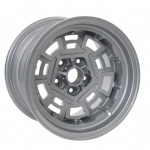 Pantera GTS - A real Italian-American story.
In the late 60s, the Ford Company gave to the Italian De Tomaso the production of a high performance, mid-engined car, for the US market.
Pantera GTS - A real Italian-American story.
In the late 60s, the Ford Company gave to the Italian De Tomaso the production of a high performance, mid-engined car, for the US market.
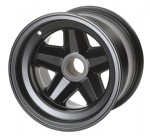 Known in period as Carrera 10, the 910 was considered the next sequence in the 906 line: the main difference to it was the use of 13” wheels. It was equipped with a 2200cc 8-cylinder air-cooled engine, with up to 270 hp at incredible 9000 rpm.
Known in period as Carrera 10, the 910 was considered the next sequence in the 906 line: the main difference to it was the use of 13” wheels. It was equipped with a 2200cc 8-cylinder air-cooled engine, with up to 270 hp at incredible 9000 rpm.
 Who mentions Lancia Stratos appoints real Italian art: bodywork by Bertone designed by Marcello Gandini; monocoque chassis with paneled tubolar; Ferrari 246 engine and three world titles.
Who mentions Lancia Stratos appoints real Italian art: bodywork by Bertone designed by Marcello Gandini; monocoque chassis with paneled tubolar; Ferrari 246 engine and three world titles.
 Designed by Orazio Satta and Giuseppe Busso at Alfa Romeo, the “TZ” was produced together with Autodelta, which was responsible for the development of the propulsion engine and of the assembly, with the SAI Ambrosini, responsible for the production of the tubular frames and with the Zagato, in charge of the bodywork with tubular chassis here named TZ “Tubolare Zagato”.
Designed by Orazio Satta and Giuseppe Busso at Alfa Romeo, the “TZ” was produced together with Autodelta, which was responsible for the development of the propulsion engine and of the assembly, with the SAI Ambrosini, responsible for the production of the tubular frames and with the Zagato, in charge of the bodywork with tubular chassis here named TZ “Tubolare Zagato”.